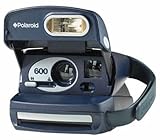
Many people looking to buy a second lens for their digital SLR camera are baffled by the number of lenses available. There are so many to choose from, it's easy to be overwhelmed by the choices. Check out these 5 top SLR camera lenses and discover why people love them so much.
1. Canon EF-S 55-250mm f/4.0-5.6 IS Telephoto Zoom Lens
The key to this lens is the image stabilization. The stabilization allows more photo ops without having to use a tripod. This makes for more crystal clear photos at Johnny's soccer game, or capturing a flock of birds at take-off. Image stabilization is an absolute must on a hand-held zoom telephoto lens.
2. Canon EF 50mm f/1.8 II Camera Lens
For people looking for a fixed focal length, this lens is lightweight and affordable. The images are sharp with great color balance. It's great for portraits and it focuses as close as 18 inches, so you gardeners will find this lens very useful. Most people who use this lens can't stop talking about the picture quality.
3. Nikon 70-300mm f/4.5-5.6G ED IF AF-S VR Zoom Nikkor Lens
This Nikkor telephoto zoom len also has image stabilization which they call Vibration Reduction. It's the Nikon version of the Canon listed above. The lens is ideal for sports, action, wildlife, and travel when you want a telephoto lens. The fans of this lens love it for capturing sports and action.
4. Nikon 50mm f/1.8D AF Nikkor Lens
Like the 50mm Canon lens above, this lens has a fixed focal length. But the quality of the pictures outweighs the fact that you need to move your feet around alot to get the shot. It's really versatile and should be in everyone's camera bag. Fans of this lens say it works great in low light situations both indoors and out.
5. Nikon 55-200mm f/4-5.6G ED IF AF-S DX VR [Vibration Reduction] Zoom Nikkor Lens
This Nikkor telephoto zoom lens is great for professional or advanced amateur photographers. It helps you capture close-up sports shots and national park wildlife without standing right next to your subject. The Vibration Reductions extends the use of the camera to capture more shots while hand held. Like the telephoto lenses above, the lens is slower than a professional zoom, so it's not a good choice for action photography in lower light conditions (like indoor sports without flash or outside sports at dusk).
Now obviously, these SLR camera lenses are only suitable for Canon and Nikon camera fans. But take this information and find a lens that works with your camera. You'll explore an exciting new area of photography and take your hobby or profession to a whole new level.
Visit : !: Elecromm.com : Best product online !: Sale Living Room Furniture On Sale Wide Angle Lens Camera On Sale!







